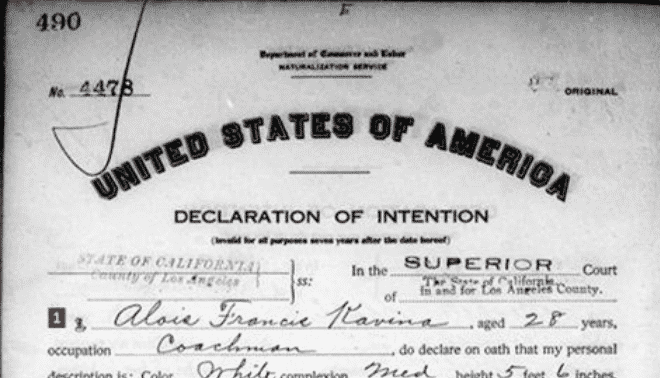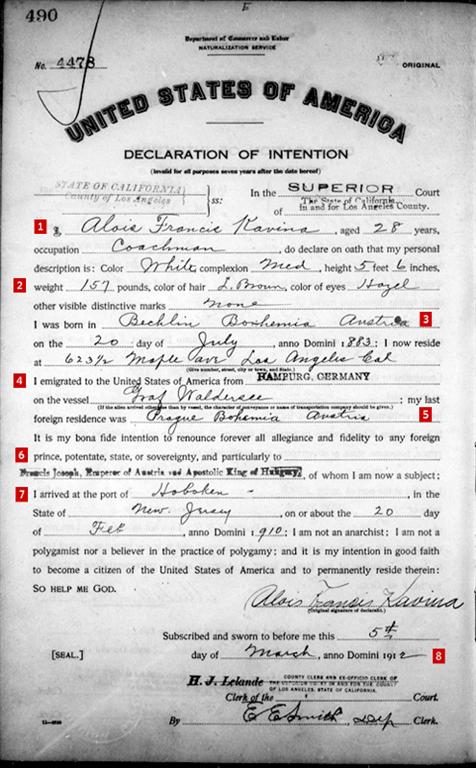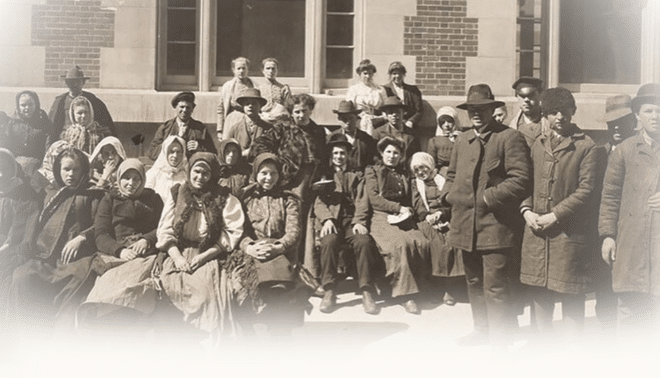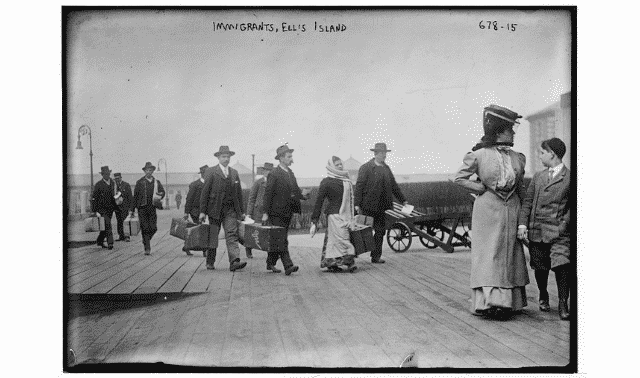Sign up for the Family Tree Newsletter Plus, you’ll receive our 10 Essential Genealogy Research Forms PDF as a special thank you!
Get Your Free Genealogy Forms
"*" indicates required fields

The naturalization process for a foreign-born person to become a US citizen was established in the Constitution. The process involved three steps: First, the individual had to swear and sign a declaration of intention denouncing the citizenship of another nation and allegiance to its ruler, and announcing intention to become a citizen of the United States.
After a prescribed waiting period, the person submitted a petition for naturalization. That waiting period has varied over the past two centuries, but the typical duration was five years. When submitting his petition, the person seeking citizenship swore an affidavit stating that the residency period and any other requirements had been satisfied. A witness who knew the applicant also swore an affidavit.
Finally, the court reviewed the documents and, if satisfied, directed that the applicant take an oath of citizenship and that a certificate of naturalization be issued.
The declaration of intention and the petition for naturalization could have been filed in different courts, but proof of the requirements had to be presented to the court where the petition was filed. An excellent book about the naturalization process is They Became Americans by Loretto D. Szucs (Ancestry).
Clues in the declaration of intention can point you to your ancestor’s residence, family members and immigration information. The format of this document differs by state or territory, but the content was almost identical everywhere. The court where the declaration was filed is always listed at the top and bottom of the document. Our example comes from Los Angeles County, Calif.

- The applicant’s name and age will give you the approximate year of birth. The occupation hints at the person’s skills.
- Many declaration documents provide physical descriptions of the applicants. You may begin to note similarities in appearance between yourself and your ancestor.
- The place of birth is a key to locating birth, christening or other records in the country of origin. The declaration might also give a birth date. Although this date may or may not be correct, you can use it to search for church records or civil registrations in the area. The current place of residence can help you trace the person in the United States through census, church and other records.
- Declarations list the place the person emigrated from and the ship he or she traveled on. You can use this information to search for passenger arrival lists, which will indicate the port of departure and any intermediate ports of call.
- The place of last residence is an excellent lead to help locate the person and his or her family before emigration.
- The actual statement of intention tells you the name of the ruler of the country from which the applicant migrated. Studying the history of that ruler can provide detailed descriptions of the area he or she ruled over at the time your ancestor left. You can then seek out maps from the period.
- The place and the date of arrival are important clues to finding passenger lists (for immigration from 1820 through 1954) and learning whom the person may have traveled with.
- The place and date the declaration of intention was processed are included in the clerk’s information at the end of the document.
Related Reads
FamilyTreeMagazine.com is a participant in the Amazon Services LLC Associates Program, an affiliate advertising program designed to provide a means for sites to earn advertising fees by advertising and linking to Amazon.com and affiliated websites.
ADVERTISEMENT






